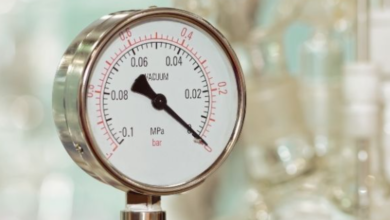Exploring the Power and Potential of Heat Pipes Technology

Imagine a world where heat moves effortlessly, keeping devices cool and running efficiently. That’s the power of heat pipes technology—a game-changer in thermal management. Heat pipes are used in everything from electronics cooling to aerospace systems, helping devices stay at the right temperature while using less energy.
These small yet powerful components transfer heat quickly and reliably, making them essential for modern technology. In this journey, you’ll learn how heat pipes work, why they’re so effective, and how they’re shaping the future of cooling solutions. Get ready to explore the science behind this fascinating innovation!
How Heat Pipes Work
Heat pipes are amazing tools for moving heat efficiently. They use two key principles: phase change (liquid turning into vapor) and capillary action (how liquids move through small spaces).
Step-by-Step Process:
- Heat Absorption (Evaporation):
One end of the heat pipe gets hot.
The liquid inside evaporates, absorbing heat and turning into vapor. - Heat Transfer (Vapor Movement): The hot vapor moves through the pipe toward the cooler end.
- Heat Release (Condensation): At the cooler end, the vapor condenses back into liquid, releasing heat.
- Liquid Return (Capillary Action): Tiny grooves or wicks inside the pipe pull the liquid back to the hot end, ready to repeat the cycle.
This continuous cycle keeps devices cool and running efficiently. Heat pipes are used in electronics, aerospace, and even cooling high-performance computers, making them a key innovation in thermal management!
Advantages of Heat Pipes
Heat pipes offer several benefits that make them a top choice for cooling and heat transfer across industries.
1. Superior Heat Transfer Efficiency
Heat pipes are great at moving heat quickly and efficiently. They work by using a liquid inside the pipe that absorbs heat, turns into vapor, and moves to a cooler area. Once there, the vapor cools down, turns back into liquid, and returns to the hot area to repeat the process.
Since this cycle happens without any moving parts, heat pipes are very reliable and require little maintenance. They can also transfer heat over long distances with minimal energy loss, keeping temperatures stable and preventing overheating.
Because of their efficiency, heat pipes help systems run better and last longer, making them a superior cooling solution compared to traditional methods.
2. Energy Efficiency
Energy efficiency is another key advantage of heat pipes. They move heat with minimal energy loss, making them ideal for industries focused on power savings. Unlike conventional cooling systems, heat pipes rely on phase change technology to transfer heat efficiently. The liquid inside absorbs heat, turns into vapor, and moves to cooler areas, where it condenses back into liquid form.
This cycle repeats naturally, reducing wasted energy. By using heat pipes, businesses can lower operational costs while keeping their systems running at peak performance. As the world moves toward more sustainable solutions, heat pipes play an important role in energy conservation, helping industries meet environmental and regulatory standards.
3. Compact and Lightweight
Heat pipes are small and lightweight, making them ideal for tight spaces where traditional cooling systems won’t fit. Their compact design is perfect for modern electronics, allowing devices to stay cool without adding extra bulk.
In industries like aerospace and automotive, reducing weight is crucial for better fuel efficiency and lower costs. Heat pipes help achieve this by providing efficient cooling without heavy components.
Available in various shapes and sizes, heat pipes can be customized to meet specific needs, offering a space-saving and highly effective thermal management solution across different applications.
4. Reliability and Longevity
Heat pipes are highly reliable because they have no moving parts, which means less wear and tear over time. This simple design helps them last much longer than traditional cooling systems. They work well in different conditions, whether in extreme heat or cold, ensuring consistent performance.
Manufacturers use strong and durable materials, which further extend their lifespan and reduce the need for frequent replacements.
In industries like aerospace and automotive, where equipment failure is not an option, heat pipes provide a dependable cooling solution. They require little maintenance and keep systems running efficiently for years.
5. Versatility
Heat pipes are widely used because they can be easily integrated into different systems that need effective cooling. Their flexible design allows them to fit into both small devices, like laptops, and large industrial machines without losing efficiency.
They come in various shapes and sizes, making them perfect for tight spaces where traditional cooling systems wouldn’t fit. Additionally, they can be customized with different cooling fluids to work in a range of temperatures, from freezing cold to extreme heat.
Heat pipes are also built to perform in challenging environments—whether in outer space, electric vehicles, or heavy industrial settings. Their ability to function reliably in tough conditions makes them a go-to solution for many industries looking for efficient thermal management.
Applications Across Industries
Heat pipes are used in many industries due to their efficiency, reliability, and versatility.
1. Electronics Cooling
As electronic devices become smaller and more powerful, effective heat management is crucial for performance and longevity. Heat pipes efficiently transfer heat away from critical components, preventing overheating in high-performance systems like servers and gaming PCs. Their compact design makes them ideal for modern electronics, providing a simple yet highly effective cooling solution.
2. Aerospace & Defense
Heat pipes are essential in aerospace and defense for maintaining optimal temperatures in high-performance electronics. They help dissipate heat in aircraft, ensuring reliability and longevity while also improving fuel efficiency and payload capacity. In defense applications, their durability and low maintenance make them ideal for harsh environments. As military and aerospace technology advances, heat pipes continue to be a vital cooling solution.
3. Automotive Sector
Heat pipes are transforming vehicle cooling by efficiently managing heat in engines and batteries, improving performance and extending component lifespan. In EVs, they help stabilize battery temperatures, enhancing efficiency and durability. Their lightweight design reduces overall vehicle weight, leading to better fuel economy. As the industry shifts toward greener technology, heat pipes support sustainability by optimizing energy use and reducing emissions.
4. Renewable Energy
Heat pipes improve the efficiency of renewable energy systems by managing heat in solar panels and geothermal applications. They prevent photovoltaic cell overheating, boosting energy conversion, and regulate temperature in geothermal systems for consistent power generation. Their compact design allows seamless integration into urban renewable setups, supporting the transition to cleaner energy.
5. HVAC Systems
Heat pipes enhance HVAC efficiency by rapidly transferring heat, reducing energy consumption while maintaining indoor comfort. Unlike traditional methods, they minimize thermal loss, lowering operational costs. Their compact design makes them ideal for homes, offices, and industries. By cutting energy waste and carbon footprints, heat pipes contribute to more sustainable climate control solutions.
Read also: Qaas Technology and Its Impact on Environmental Sustainability
Innovations and Future Trends
Heat pipe technology is evolving rapidly, with advancements that enhance efficiency, performance, and sustainability across multiple industries.
Heat pipe technology is advancing rapidly with several key innovations:
- Nanofluids for Better Cooling: Adding nanoparticles like metal oxides or graphene to liquids increases thermal conductivity, leading to faster heat dissipation—ideal for electronics, aerospace, and industrial applications.
- 3D-Printed Heat Pipes: Additive manufacturing enables complex internal structures, improving heat transfer and making heat pipes more efficient, especially in aerospace and high-performance computing.
- Smart Materials: Phase-change materials, shape memory alloys, and thermo-responsive polymers allow heat pipes to adapt dynamically to temperature changes, enhancing energy efficiency in EVs, industrial heating, and space applications.
- Eco-Friendly Cooling Solutions: Sustainable alternatives like water-based nanofluids, organic refrigerants, and ionic liquids reduce environmental impact while maintaining high performance.
- IoT & AI Integration: Smart sensors and AI-driven optimization enable real-time monitoring, predictive maintenance, and adaptive cooling in industries like data centers and renewable energy.
These innovations promise more efficient, lightweight, and sustainable heat pipes, revolutionizing thermal management across multiple sectors.




